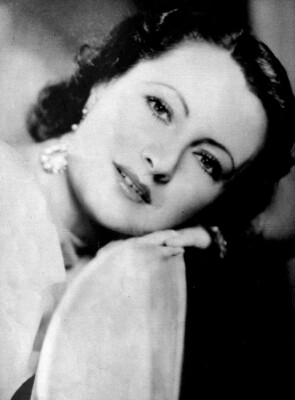Jill Esmond

Biography
Jill Esmond was a pioneering English actress best known for her influential stage and screen performances during the early 20th century. Her work left a significant mark on British theatre and cinema, and her personal life connected her to some of the era’s most notable personalities.
Early Life
Born on January 26, 1908, in London, England, Jill Esmond grew up in a family deeply immersed in the performing arts. Her father, Henry Esmond, was a well-known playwright and actor, and her mother, Eva Moore, was a celebrated stage actress. This artistic upbringing fostered Jill Esmond’s passion for acting from a young age, setting her on the path to a distinguished career.
Career and Rise to Fame
Jill Esmond began her professional journey on the London stage, quickly gaining recognition for her poise and talent. Her breakout role came in the 1929 stage production of “The First Mrs. Fraser,” which showcased her captivating presence. By the early 1930s, Jill transitioned to film, starring in movies such as “The Skin Game” (1931), directed by Alfred Hitchcock, and “Dangerous Corner” (1934). These roles cemented her reputation as a versatile and skilled actress.
Beyond her own performances, Jill Esmond’s career intersected with some of the most prominent figures in entertainment. She worked alongside legendary directors and shared the screen with acclaimed actors, making her a respected figure within the industry.
Achievements and Legacy
Jill Esmond’s contributions to British theatre and film are regarded as trailblazing, particularly for women in the performing arts during a time when the industry was dominated by men. She was recognized for her ability to portray complex characters with nuance and depth, earning critical acclaim throughout her career. Her work in both stage and screen productions has inspired generations of performers who followed in her footsteps.
Personal Life
Jill Esmond’s life was as compelling offstage as it was on. She married Laurence Olivier in 1930, and together they became one of the most celebrated couples in British theatre. Their marriage, however, ended in 1940. Jill and Laurence Olivier had one son, Tarquin Olivier. Despite their separation, Jill Esmond maintained a dignified public profile and continued to be respected in artistic circles.
Later Years and Death
Jill Esmond gradually stepped back from the spotlight in the 1940s but remained active in the arts. She passed away on July 28, 1990, in London. Her legacy endures through her memorable performances and the impact she had on British theatre and cinema.
Conclusion
Jill Esmond remains an important figure in the history of British performing arts. Her career, marked by talent, resilience, and innovation, continues to inspire actors and audiences alike. For those interested in the early days of cinema and theatre, exploring Jill Esmond’s body of work offers a fascinating glimpse into the evolution of performance art in the 20th century. For more on the era’s influential figures, see Laurence Olivier and Eva Moore.
Detailed Information
| Full Name | Jill Esmond |
| Gender | Female |
| Residence | London, England, United Kingdom |
| Marital Status | Divorced |
| Children | Tarquin Olivier |
| Father | Henry Esmond |
| Mother | Eva Moore |
| Years Active | 1927–1955 |
| Known For | The Skin Game, Dangerous Corner, The First Mrs. Fraser |
| Major Achievements | Pioneering British actress in early 20th-century theatre and film |
| Income Sources | Stage acting, film acting |



